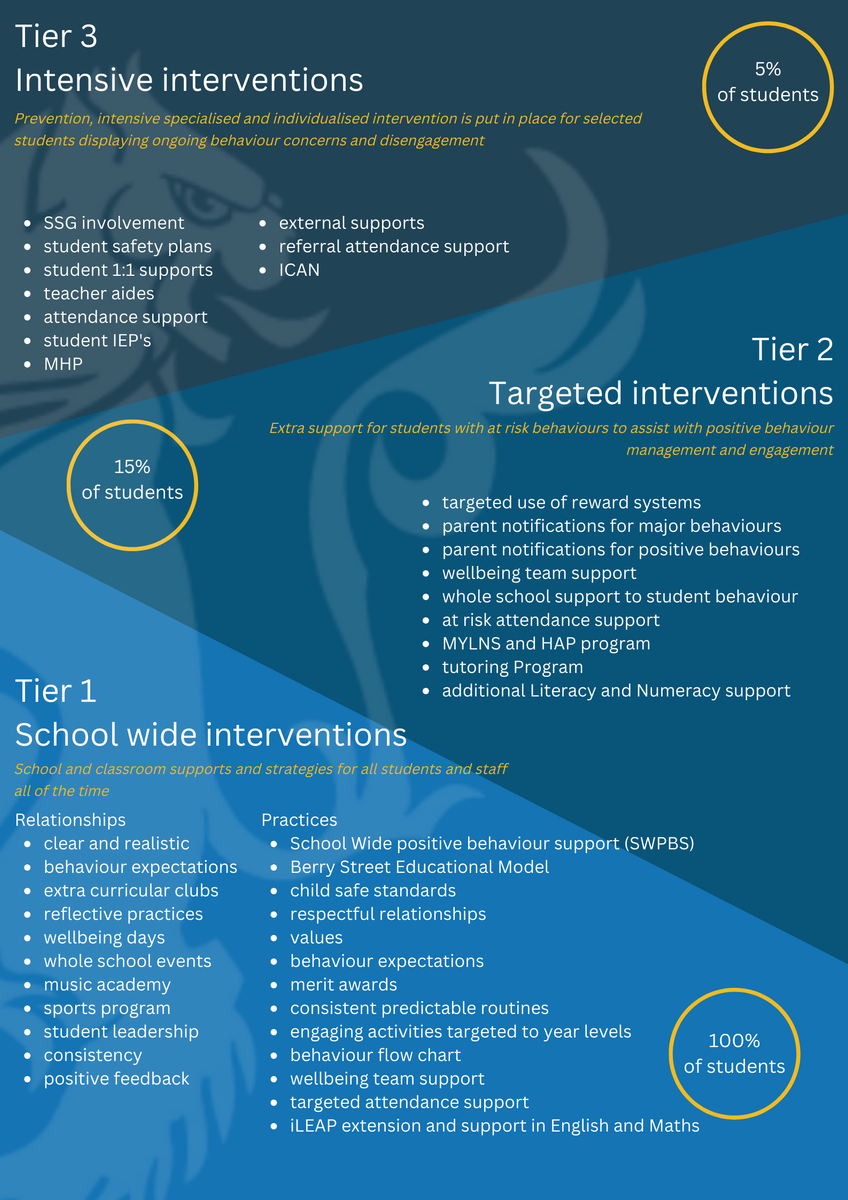Whole School Prevention
Three tired Approach

Whole School Prevention
Three tired Approach
Student Behaviour Support is designed for all students, we are able to address the needs of the students requiring more intensive behaviour support in Engagement and Wellbeing.
To enable the interventions used for the ‘at risk’ and ‘individual’ students to also become successful, our Whole School Student Support will provide the supportive environments and practices to maintain these changes.


Tier 1 'differentiated and explicit teaching for all students', or school-wide interventions, are the critical foundation for PBS. Interventions are at the whole-school level and are provided to all students across academic, emotional and behaviour dimensions of learning.
The focus of Tier 1 intervention is on all students and staff across all settings—whole-school, classroom and non-classroom.
Examples of Tier 1 supports include:
Tier 2 or 'focused' interventions support approximately 15% of students in a typical school who are not responding to Tier 1 and who have moderate, ongoing behaviours of concern (social, behavioural and academic). Support is provided through additional Tier 2 or "targeted" level interventions.
The focus of Tier 2 is to reduce the number of existing students requiring additional support.
Examples of Tier 2 supports include:
Tier 3 or 'intensive' interventions support approximately 5% of students who have not responded to Tier 1 and Tier 2 interventions. Students may require Tier 3 or 'intensive' level of supports involving highly individualised interventions to support a tailored learning program. The focus of Tier 3 is to reduce the intensity and complexity of existing individual student’s situations.
It is important that students requiring Tier 2 and Tier 3 interventions have received, and are continuing to receive, the same level of Tier 1 support as other students. Tier 2 and 3 interventions are only effective when Tier 1 foundations are strong. If there are more than 15% of students receiving Tier 2 support then more attention has to be paid to Tier 1.
Tier 3 interventions and supports involve: